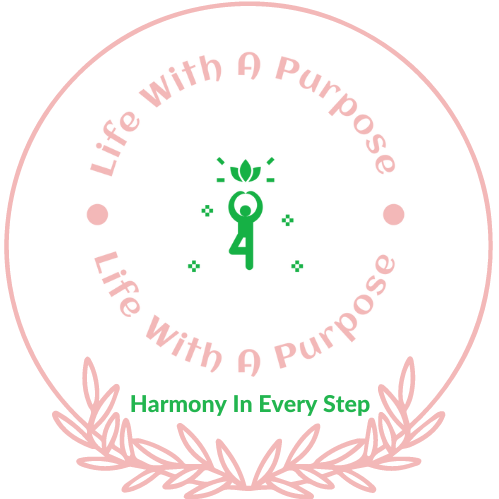Empowering Lifestyle Transformation
Want Better Results? Don’t Skip These Recovery Essentials
Proper recovery is the secret to unlocking better results from your workouts. In this article, we’ll explore essential recovery techniques that help you reduce soreness, repair muscles, and keep you moving forward toward your fitness goals.


Want Better Results? Don’t Skip These Recovery Essentials
When it comes to fitness, we often focus on the workouts themselves—pushing our limits, lifting heavier weights, or running longer distances. But there’s an equally important component that many people overlook: recovery. I’ve learned over time that taking care of my body after a workout is just as vital as the workout itself. Recovery not only helps to alleviate soreness but also allows your muscles to rebuild stronger, which translates to better results. This is the key to long-term success in any fitness journey.
My Recovery Journey
As someone who loves staying active, I’ve always made recovery a priority. After each workout, I stretch, incorporating yoga or improvising with YouTube full-body stretches based on what feels right for my body at the time. Before intense workouts, I make sure to fuel up with proper nutrition, and afterward, I snack on plant-based foods or have a protein shake to help with muscle repair.
When my muscles are particularly sore, I like to unwind in the sauna or take a swim, which helps release muscle tension. Baths with recovery salts and a few drops of lavender oil also play a big role in soothing my body and mind.
Stretching is as essential to me as the workout itself, but I know the pain of waking up so sore that moving seems impossible. That soreness, however, is a sign that I’ve pushed myself, and I embrace it, knowing it’s part of the process. With time, I’ve discovered several key recovery strategies that have worked wonders for me, and I’m excited to share them with you!
Full Body Release
Release tension and restore balance with this 30-minute full-body yoga session focused on chest, side, upper body, and hip relief.
Perfect for easing tightness and promoting relaxation throughout your entire body.
Why Is Recovery So Important?
The concept of recovery might seem secondary to training, but it’s an essential part of your overall fitness progress. When you exercise, your muscles endure microtears, especially during resistance training or intense cardio.
The recovery process is when your body repairs these tears, making the muscles stronger and more resilient. If you skip this phase, you risk injuries, burnout, and stagnating progress.
Let’s explore some proven recovery strategies to help you recover efficiently, feel good, and get the best results from your hard work.
Stretching: The Unsung Hero of Recovery
Stretching isn’t just about increasing flexibility—it’s a crucial element of muscle recovery. After a workout, your muscles are contracted and tight, which can lead to discomfort and stiffness. Stretching helps lengthen the muscles and improve circulation, aiding in faster recovery.
Science Says: A study published in the Journal of Athletic Training found that stretching post-workout reduces muscle soreness and improves overall muscle function. It also helps maintain joint mobility, reducing the risk of injury. Dynamic stretches before a workout and static stretches afterward are ideal for a balanced approach.
For me, stretching is my go-to after every workout, whether it’s following a guided yoga session or simply improvising based on what feels tight. This personal touch ensures I target the areas that need it most, and it’s a great way to relax mentally after a tough session.

Healthy Snacks
My favorite one is dates with nut butter, almond butter works the best for me but you can try peanut butter or any other. Just cut the date in half fill it up with nut butter and enjoy!
Refueling with Proper Nutrition
Proper nutrition post-workout is essential for muscle recovery and repair. Protein, in particular, plays a critical role in rebuilding muscle fibers that are damaged during exercise. Carbohydrates help replenish the glycogen stores that fuel your workouts, while healthy fats support overall cellular repair.
Science Says: According to a review in the Journal of the International Society of Sports Nutrition, consuming protein and carbohydrates within the first two hours after exercise is optimal for muscle recovery and glycogen replenishment. Plant-based athletes should aim for foods like beans, lentils, tofu, or protein shakes made with pea or hemp protein.
Personally, I stick to plant-based snacks and sometimes a protein shake post-workout. I’ve found that eating a mix of carbs and proteins within 30 minutes of exercise reduces my soreness and helps me recover faster.
Active Recovery: Keep Moving
It might sound counterintuitive, but moving your body on rest days can help accelerate recovery. Activities like walking, swimming, or light cycling increase blood flow to the muscles, delivering essential nutrients and oxygen for repair. This approach, known as active recovery, can help reduce stiffness and soreness.
Science Says: Research shows that active recovery can decrease lactic acid levels ( definition and information here) in the muscles faster than complete rest, helping athletes feel less fatigued and more refreshed the next day.

Active Recovery: Swimming
I’ve found that swimming is an ideal form of active recovery for me. It’s low-impact, but it gets my blood flowing and helps me relax.
Even on days when I feel too sore to move much, a gentle swim helps release tension in my muscles and soothes my mind.
Hydration: Don’t Skip It!
Staying hydrated is essential for overall health, but it’s particularly important when it comes to recovery. Water helps transport nutrients to the muscles and flushes out toxins that accumulate during exercise. Dehydration can slow down the recovery process and increase muscle soreness.
Science Says: That dehydration reduces blood flow to muscles and delays muscle repair. Drinking enough water—at least half your body weight in ounces per day—can significantly aid in recovery.
I always make sure to drink plenty of water throughout the day, especially after a tough workout. It’s a simple habit, but it makes a huge difference in how quickly I recover.
Sleep: The Secret Weapon
Sleep is one of the most underrated aspects of workout recovery. During deep sleep, your body produces growth hormone, which is vital for muscle repair and growth. Not getting enough sleep can lead to increased soreness, slower recovery, and even a higher risk of injury.
Science Says: Research shows that athletes who sleep less than eight hours per night have a significantly higher risk of injury than those who sleep more. Prioritizing good sleep hygiene can have a profound impact on your recovery.
I’m a huge advocate of getting enough sleep, especially after a heavy workout day. I notice that when I don’t get enough rest, my body feels it the next day—everything from soreness to fatigue is amplified.
Sauna and Baths: Heat for Recovery
Using heat therapy, such as saunas or warm baths, can relax tight muscles, increase circulation, and help relieve pain. Saunas, in particular, have been shown to increase heart rate and circulation, promoting faster muscle recovery.
Science Says: Studies suggest that heat therapy can enhance recovery by increasing blood flow to the muscles and aiding in the removal of metabolic waste products. Warm baths with Epsom salts and essential oils like lavender can also provide additional muscle relaxation and stress relief.

Sauna Love
On days when my muscles feel particularly sore, I love to relax in a sauna or take a warm bath with muscle recovery salts and lavender drops.
This simple ritual helps me feel rejuvenated and ready to tackle my next workout.
Conclusion: Make Recovery Non-Negotiable
Incorporating recovery into your fitness routine isn’t just optional—it’s essential. From stretching and nutrition to sleep and active recovery, each component plays a role in helping your body repair and rebuild. By giving your muscles the attention they need after a workout, you’ll not only feel better but also see improved results in your performance and physique.
So, the next time you finish a tough workout, don’t skip the recovery. Stretch, refuel, rest, and let your body do the magic. You’ve earned it!
*The information provided here is for educational purposes only and does not constitute medical advice. Always consult with a qualified healthcare professional before starting any new fitness regimen or making changes to your existing exercise routine, especially if you have any underlying health conditions or concerns.
Core Values
Guiding Principles for Transformation
Empowerment
We empower individuals to take charge of their well-being and lead a purpose-driven life through education, support, and guidance.
Holistic Wellness
We believe in nurturing the mind, body, and spirit to achieve a balanced and harmonious state of well-being for overall health.
Community Connection
We foster a supportive community that encourages collaboration, growth, and mutual empowerment on the journey towards a healthier, more fulfilling life.
Begin Your Wellness Adventure Now
Join us on the path to a healthier and more fulfilling life. Take the first step now!
